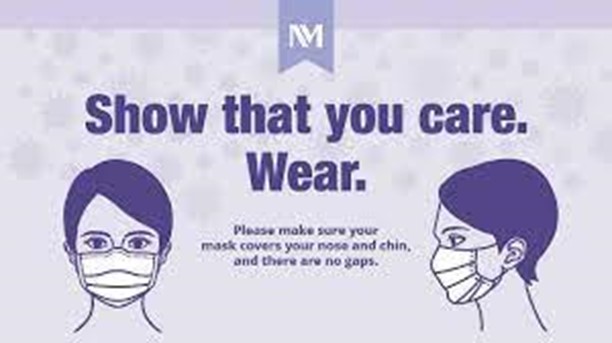A nurse is admitting a client who has rubella. Which of the following actions should the nurse plan to take?
Instruct the client's loved ones that the client should not have fresh flowers in their room.
Wear a surgical mask when within 0.9 m (3 feet) of the client.
Place the client in a room with negative-airflow pressure.
Instruct the client that visitors will not be allowed while they are in isolation.
The Correct Answer is B
Choice A rationale:
Instructing the client's loved ones that the client should not have fresh flowers in their room (Choice A) is not a necessary action for rubella isolation. Rubella is transmitted through respiratory droplets, and the prohibition of fresh flowers is not a relevant precaution.
Choice B rationale:
Wearing a surgical mask when within 0.9 m (3 feet) of the client (Choice B) is the correct action. Rubella is an airborne disease, and wearing a surgical mask helps prevent the spread of infectious respiratory droplets to the nurse and other individuals.

Choice C rationale:
Placing the client in a room with negative-airflow pressure (Choice C) is not specifically indicated for rubella isolation. Negative-airflow pressure rooms are typically used for diseases that require strict airborne precautions, such as tuberculosis.
Choice D rationale:
Instructing the client that visitors will not be allowed while they are in isolation (Choice D) is not entirely accurate for rubella isolation. While isolation precautions are necessary, visitors can enter the room if they are properly protected, including wearing masks and following infection control protocols.
Nursing Test Bank
Naxlex Comprehensive Predictor Exams
Related Questions
Correct Answer is D
Explanation
Choice A rationale:
Dysrhythmia refers to irregular heart rhythms and is not associated with the carotid artery. It involves issues with the heart's electrical conduction system.
Choice B rationale:
A cardiac murmur is an abnormal sound heard during the heartbeat cycle, usually indicating turbulent blood flow across heart valves. It's not directly related to the carotid artery.
Choice C rationale:
Hypotension refers to low blood pressure, which might impact blood flow through the carotid artery but wouldn't directly cause the sound known as a bruit.
Choice D rationale:
A bruit heard while auscultating the carotid artery suggests a narrowed arterial lumen. A bruit is a whooshing or blowing sound caused by turbulent blood flow due to arterial narrowing or blockage.
Correct Answer is B
Explanation
Choice A rationale:
Increased sensitivity to touch is not an expected physiological change associated with aging. Older adults often experience decreased sensitivity to touch due to changes in nerve endings and decreased skin elasticity. This can lead to decreased sensation rather than increased sensitivity.
Choice B rationale:
Decreased peripheral circulation is an expected physiological change associated with aging. With age, blood vessels can become less elastic and more narrow, leading to reduced blood flow to the extremities. This can result in cold extremities, delayed wound healing, and increased vulnerability to skin breakdown. Nurses should assess for signs of impaired circulation in older adult clients and provide appropriate interventions to prevent complications.
Choice C rationale:
Decreased airway resistance is not an expected physiological change associated with aging. Older adults often experience increased airway resistance due to changes in lung elasticity and chest wall compliance. This can lead to decreased lung function and a higher risk of respiratory issues such as pneumonia and bronchitis.
Choice D rationale:
Increased appetite is not an expected physiological change associated with aging. In fact, many older adults experience a decrease in appetite due to factors such as changes in metabolism, decreased sense of taste and smell, and underlying health conditions. This reduced appetite can contribute to malnutrition and weight loss in the elderly population.
Whether you are a student looking to ace your exams or a practicing nurse seeking to enhance your expertise , our nursing education contents will empower you with the confidence and competence to make a difference in the lives of patients and become a respected leader in the healthcare field.
Visit Naxlex, invest in your future and unlock endless possibilities with our unparalleled nursing education contents today
Report Wrong Answer on the Current Question
Do you disagree with the answer? If yes, what is your expected answer? Explain.
Kindly be descriptive with the issue you are facing.
